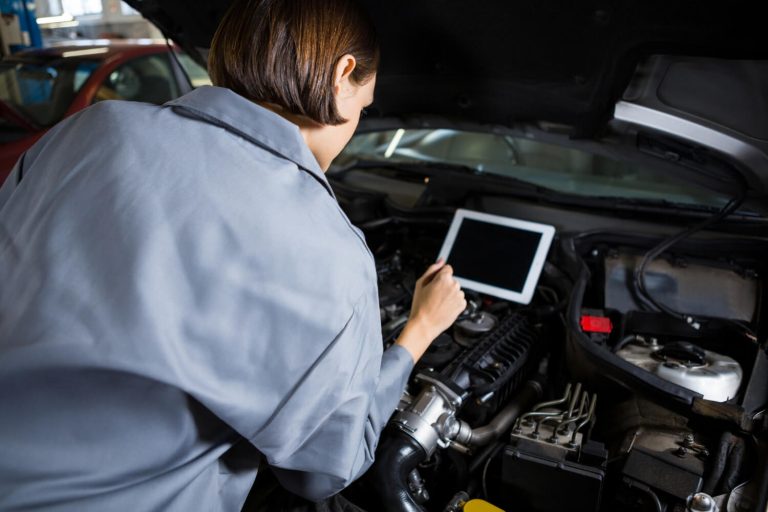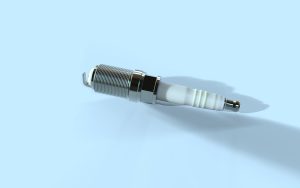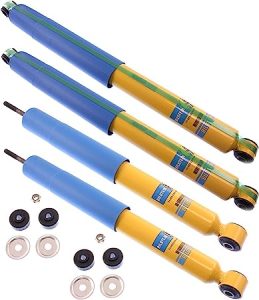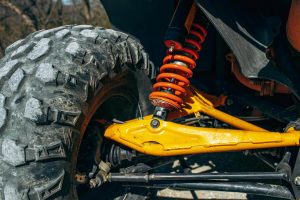Understanding how to check your oil pressure is crucial if you own a car. This is very important if your car is an older model. Oil pressure can drop over time, and your engine could seize up if it gets too low. Fortunately, checking your oil pressure is relatively easy and can be done with an OBD2 reader. You can connect it to your car’s OBD2 port using a portable device to check oil pressure without gauge.
Once it’s plugged in, it will display your car oil pressure on the screen. If you don’t know how to check oil pressure with obd2 you are at right place.
Table of Contents
ToggleWhat is OBD2
OBD2 stands for onboard diagnostics and refers to the system used by modern vehicles to self-diagnose and report faults. The OBD2 system monitors the performance of the engine, transmission, and emissions control systems and stores data about any detected defects.
The OBD2 system will record a code when a fault is found, and a mechanic can read that code by utilizing a specialized scanner. This code can aid in problem diagnosis and assist choose the most effective repair strategy. The OBD2 system is required by law in many countries, as it helps to ensure that vehicles are safe and emissions are controlled. In the United States, the OBD2 system must be present in all cars built after 1996.
While the OBD2 system is handy, it is essential to note that it is imperfect. Sometimes, the system may only detect a problem once it is too late to fix it. In other cases, the system may give incorrect codes, leading to unnecessary repairs. Despite these limitations, the OBD2 system is a valuable tool that can help keep your vehicle running smoothly.
What is Oil Pressure, and Why is it Crucial?
Oil pressure is the force with which motor oil is circulated through the engine. It is expressed as psi or bar, or pounds per square inch. An oil pressure sensor is a transducer that notifies the engine control unit (ECU) of changes in oil pressure. The ECU then adjusts the fuel injection and ignition timing to compensate for the oil pressure.
Oil pressure is crucial because it keeps the engine lubricated. If the oil pressure is too low, the engine will not be adequately lubricated and will suffer excessive wear and tear. An unsuitable lubricated engine will overheat and can seize up, leading to expensive repairs.
Oil pressure is also vital for cooling the engine. The oil circulates through the engine and helps to cool it down.The engine could be harmed if the oil pressure is too low and causes the engine to overheat. Regularly check your oil level and replace it in accordance with the manufacturer’s instructions.
How to Check Oil Pressure With OBD2
To check your car oil pressure, you’ll need to connect it to an obd2 oil pressure gauge and read the pressure sensor data. The pressure sensor is located on the engine and measures the oil pressure in the engine. Too little pressure can harm the engine if it is there.
Start the engine, then wait a few minutes for it to warm up before checking the oil pressure. Then, connect the OBD2 reader to the car’s diagnostic port. Once the reader is connected, it will display the oil pressure data.
There are a few different things that OBD II can show when it comes to oil pressure. The first is simply a reading of the oil pressure itself. This can help diagnose an issue with the oil system or keep an eye on the oil pressure to make sure it’s within the proper range.
The second thing that OBD II can show is a warning light if the oil pressure is low. It can be a helpful indicator that there’s an issue with the oil system that needs to be addressed.
Check the voltage at idle rpm using your scan tool. If it is cold, it should be close to 1 volt. It should be between 6 and 10 volts if it is hot and operating for a while.

Buy on Amazon
How Do I Fix A Low Oil Pressure Warning Light?
If your car displays a low oil pressure warning light, it’s important to take action immediately to avoid severe engine damage.
Check your engine’s oil level first. If it’s low, add oil until the dipstick is completely filled. Checking the oil pressure sensor comes next if the oil level is satisfactory. This is typically found on the engine block’s side. To test the sensor, remove the electrical connector and use a multimeter to test the sensor for continuity. If the sensor is faulty, it will need to be replaced.
If the sensor is not the problem, the next step is to check the oil pump. It is located under the timing cover on the side of the engine. To test the oil pump, remove the oil pressure gauge and screw in a manual oil pressure gauge in its place. Start the engine and let it idle. The oil pressure should be between 15 and 25 psi. The oil pump will need to be replaced if the pressure is less than this.
There are a few ways to check the oil pressure with an OBD2 scanner. One is to use the live data function to view the oil pressure while the engine is running. Another is to use the freeze frame function to view the oil pressure at the time of the fault.
Also Read: How Long can you Drive an overheating Car
Conclusion
There are a few ways to check your car oil pressure, and while obd2 is useful, a digital oil pressure monitor is ideal. This gauge will give you an accurate reading of your oil pressure and is easy to use.
To use a digital oil pressure gauge, attach the gauge to your car’s oil pressure sending unit. The sending unit is usually located on the engine block, near the oil filter. Once the gauge is attached, turn on the ignition and idle the engine for a few minutes.
Frequently Asked Questions
What symptoms indicate low car oil pressure?
The most common sign of low oil pressure is the oil light coming on. This warning light comes on when the oil pressure is too low. When you notice this light, stop the vehicle and check the oil level. If the oil level is low, top it off and keep going. If the oil level is adequate, the oil pressure sensor or oil pump may be malfunctioning.
Another sign of low oil pressure is engine noise. If your engine makes more noise than usual, it may be because the oil pressure is low. The engine may sound like it is knocking or ticking. It is because the oil is not lubricating the engine parts properly.
Can I drive my vehicle with low oil pressure?
Generally speaking, you should not drive your car if the oil pressure light is on. This is because it indicates insufficient oil circulating through the engine, so the engine is not adequately lubricated. This could seriously harm the engine’s parts and perhaps result in engine failure.
If you are forced to drive while the oil pressure sign is on, there are a few steps you can do to lessen the risk of engine damage:
- Watch the oil level and add more if required.
- Reduce the stress on the engine by avoiding driving at high speeds or for extended periods of time.
- As quickly as possible, have a mechanic examine the vehicle.







